 |
|||||||||||||||
Reaction Motors, Inc. (RMI) developed the LR-11 and LR-99 rocket engines used to power the X-15. On 17 Apr. 1958, RMI was acquired by the Thiokol Chemical Corporation, and then became the Reaction Motors Division (RMD) of Thiokol. |
||
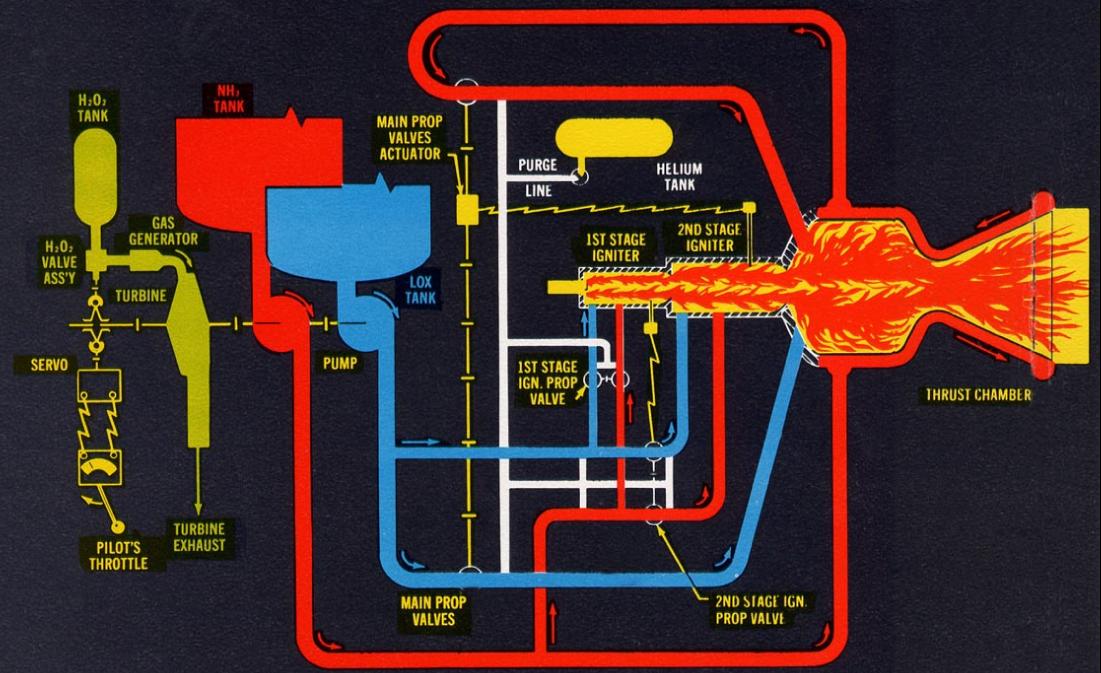 |
||
Schematic diagram of the XLR99-RM-1 at full throttle, producing an output of 57,000 pounds of thrust. Fuel is Anhydrous Ammonia (NH3) using Liquid Oxygen (LOX) as the oxydizer. With the main valves open, propellants are injected into the thrust chamber at more than 12,000 pounds each minute, giving the rocket a half-million horsepower. Thiokol |
||
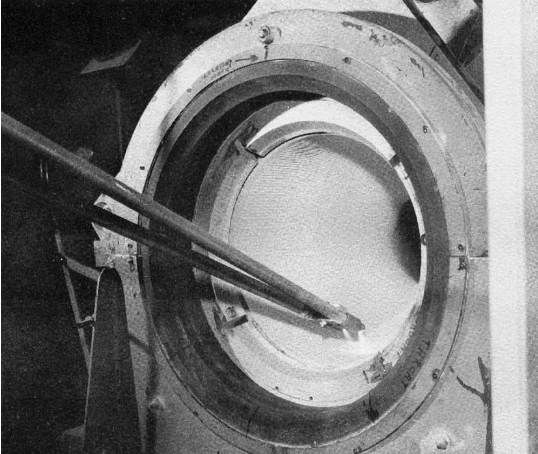 |
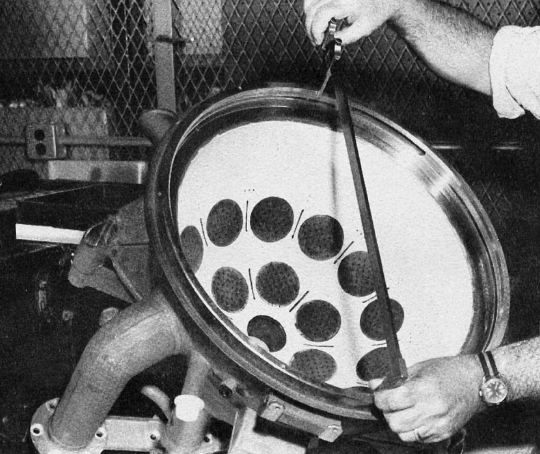 |
|||
Applying a heat-resistant ceramic coating to the LR-99 thrust chamber. Add this to regenerative cooling, and the rocket nozzle was all but immune to burn through. Thiokol |
The injector sprays more than 200 pounds of propellant into the thrust chamber every second during 90 seconds of LR-99 operation during the boost phase of an X-15 flight. Thiokol |
|||
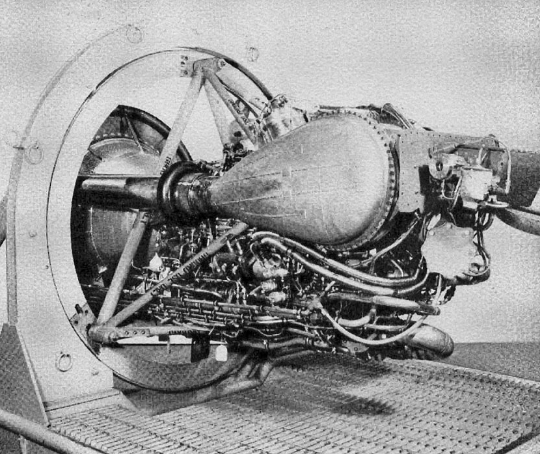 |
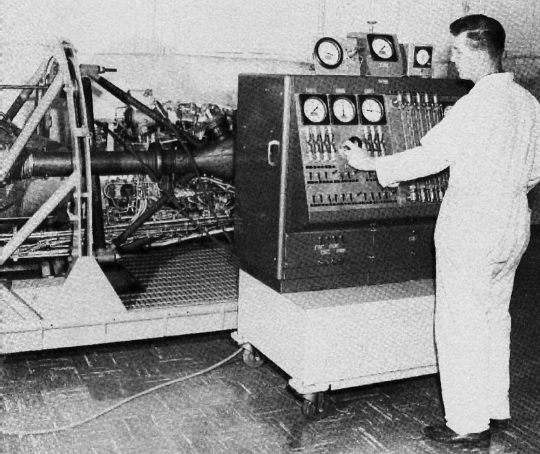 |
|||
The LR-99 turbopump contains a two-stage impulse turbine and two centrifugal pumps mounted on a common shaft. A gas generator decomposses hydrogen peroxide into superheated steam to drive the turbine blades of the turbopump. Thiokol |
Following inspection of all individual components, and final assembly, a checkout is performed on the completed rocket engine. This test console ran diagnostics to prove out the system prior to live engine firing tests. Thiokol |
|||
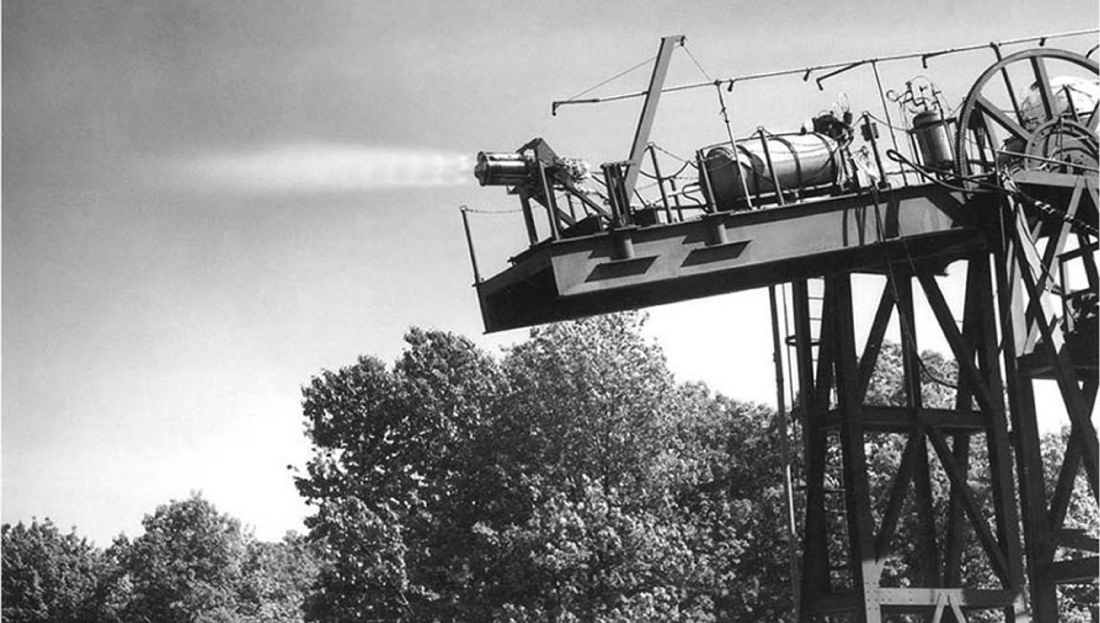 |
||
A four-chamber XLR-11 being test fired on Reaction Motors Test Stand D. This is an earlier version of the LR-11 and does not have the nozzle extensions that added thrust for the X-15. This later version, the XLR11-RM-13, increased thrust to 2,000 pounds per chamber, for a total thrust of 8,000 pounds per 4-chamber rocket, and 16,000 pounds total with the 8-chamber double stack used on the early X-15 flights. Even with the added impulse, this was only about 28 percent of the thrust provided by the XLR-99. Bob Holland collection |
||
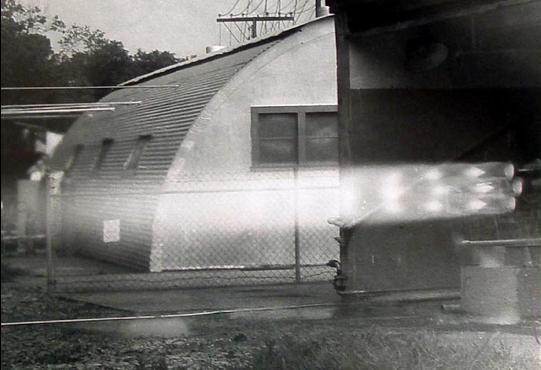 |
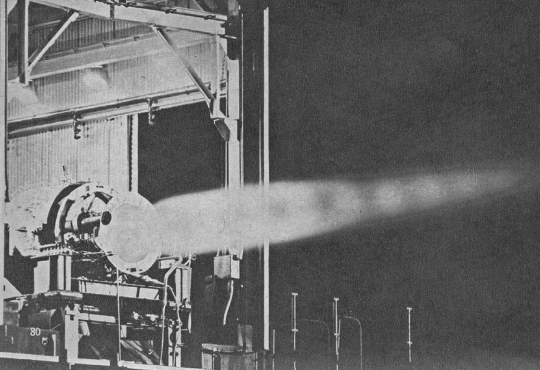 |
|||
An XLR-11 firing in an RMI static test stand. Bob Holland collection |
An XLR-99 static fire test in RMI Test Stand R-3. Bob Holland collection |
|||
 |
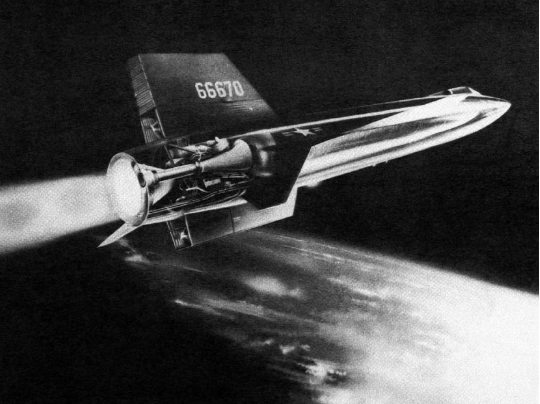 |
|||
RMI Test Stand E-1 during a test firing. Bob Holland collection |
A Thiokol image highlighting the placement of an LR-99 powerplant in the X-15. Thiokol |
|||
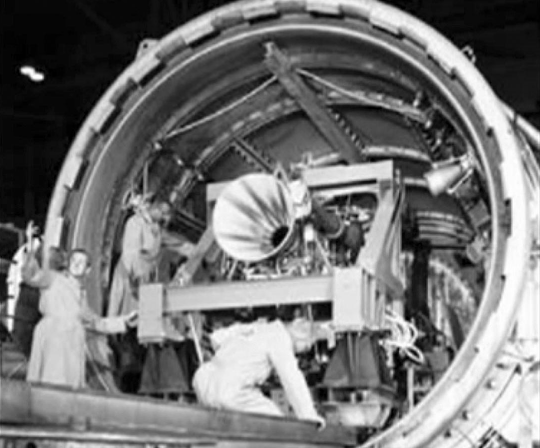 |
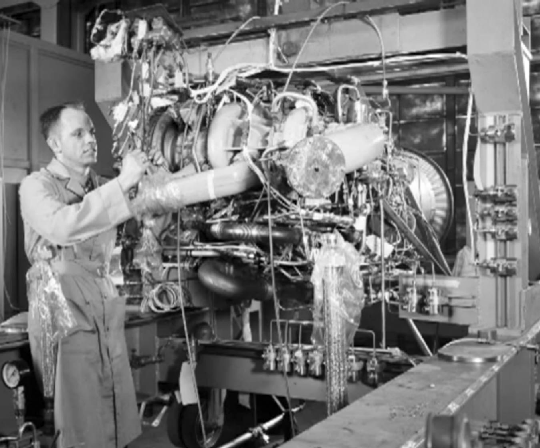 |
|||
Placing an LR-99 into an altitude chamber for testing at flight conditions. Thiokol |
Completing the hookups prior to the altitude chamber test. Thiokol |
|||
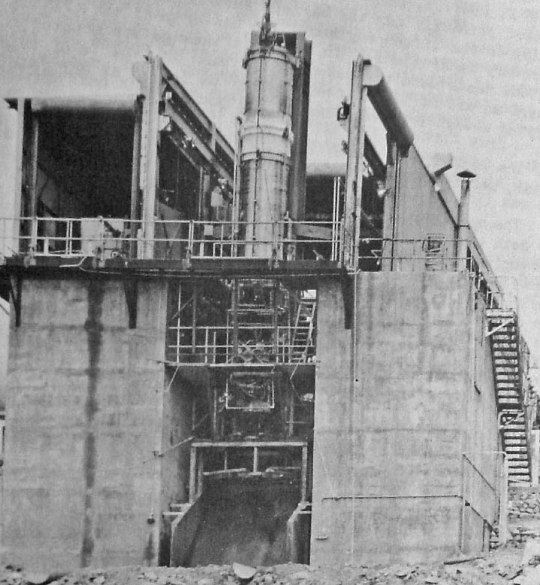 |
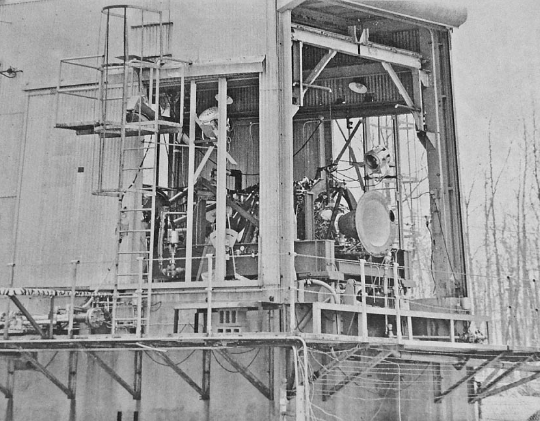 |
|||||
Test Stand R-3, preparing for an LR-99 test firing. Thiokol |
||||||
At Test Stand R-2 the rocket engine could be rotated 90 degrees so that it was firing as if the X-15 was headed straight up. This stand also had the ability to test at simulated altitude. Thiokol |
||||||
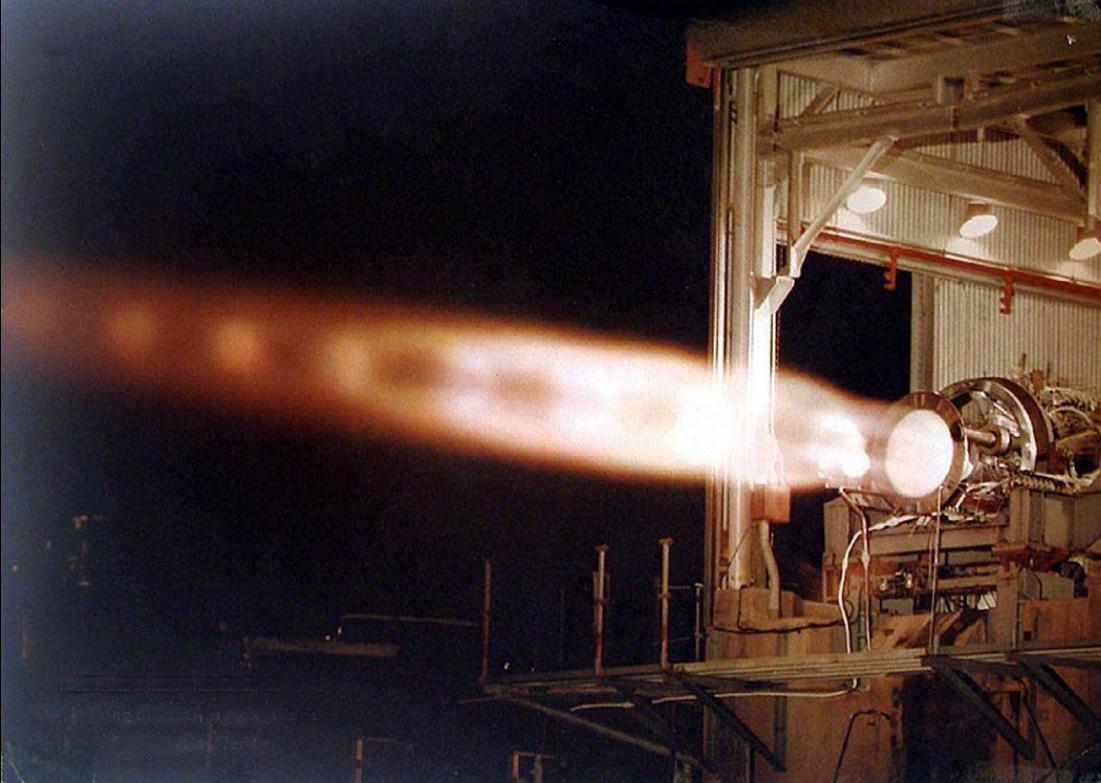 |
||
This is the best photograph I have yet found of an XLR-99-RM-1 being static fired. This test is on Test Stand E at the Reactions Motors site outside Denville, New Jersey. The photo comes from a web site set up by Bob Holland. I highly recommend checking it out for great information on rocket engine develoment at RMI/RMD in the 1950s and 1960s. Unfortunately Bob is now deceased, so I don't know how long his site will remain available. Bob Holland collection |
||
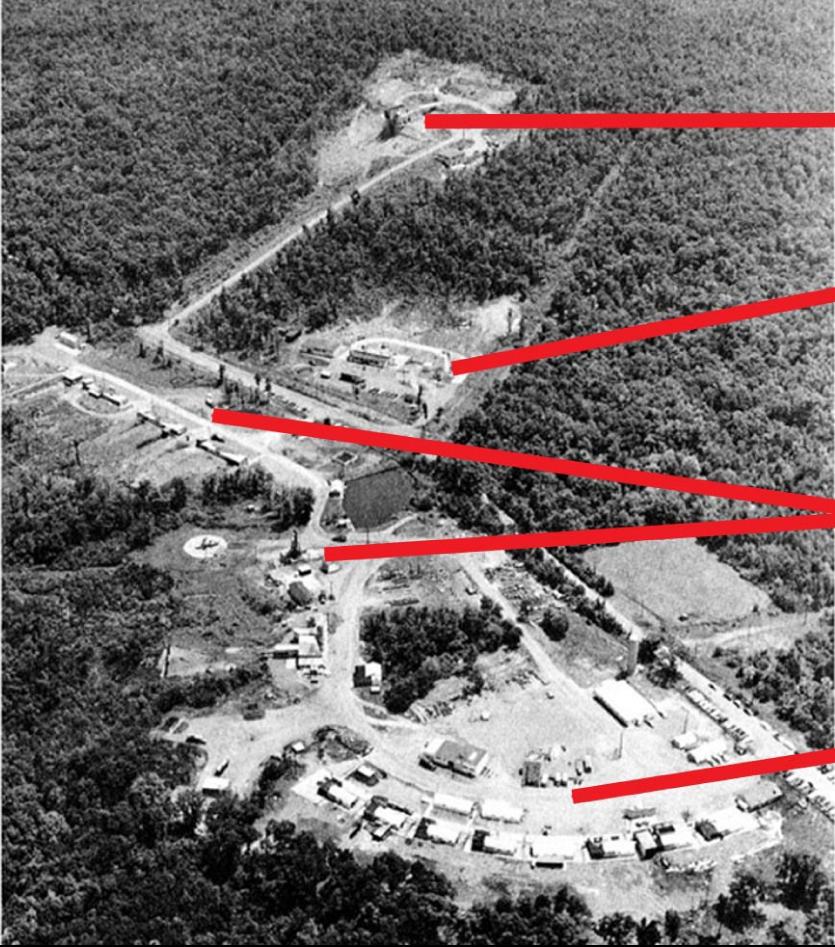 |
||||
Site layout showing the Reaction Motors test stands during the time of XLR-99 development and testing.
Photo is taken looking almost due south. |
||||
Test Area E |
||||
Test Area D |
||||
Test Areas B & C |
||||
Test Area A Original RMI test stands |
||||
— Postscript to Reaction Motors at Denville, New Jersey — |
||
The following photographs were taken after the abandonment of the Reaction Motors site in 1972. The various test stands fell into disrepair and eventually everything was demolished between 2012 and 2016. The photos above and below stand as a testament to the essential work accomplished over many years by the dedicated engineers and technicians at Reaction Motors. Without their rocket engines, many of the things we take for granted in the history of aviation and space may not have occurred. |
||
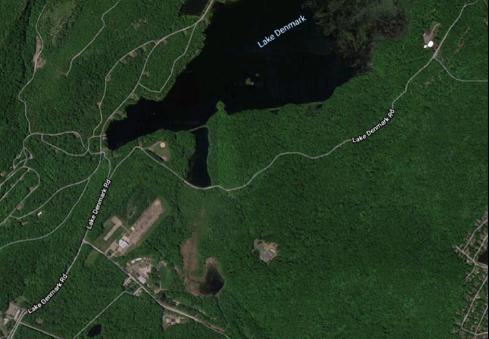 |
|||||
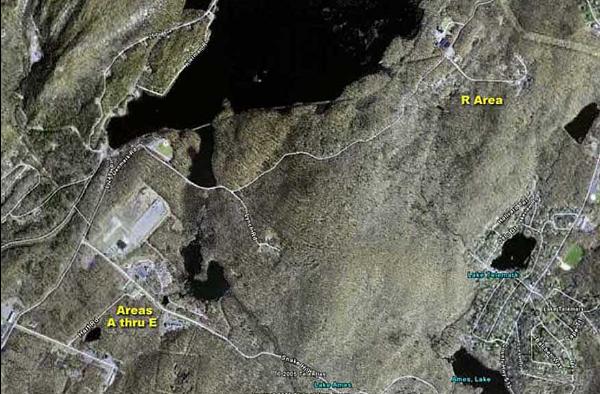 |
|||||
The Lake Denmark area, near Rockaway and Denville, New Jersey, where the RMI/RMD test stands used to be. At left the test stand areas are still visible, while above shows the area today where almost all traces are now gone. Google Earth |
|||||
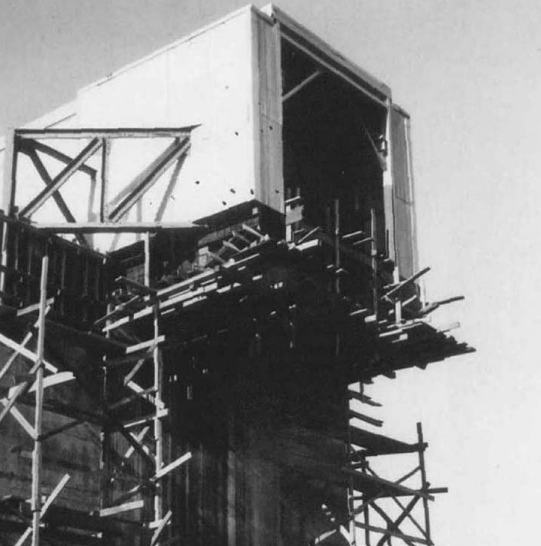 |
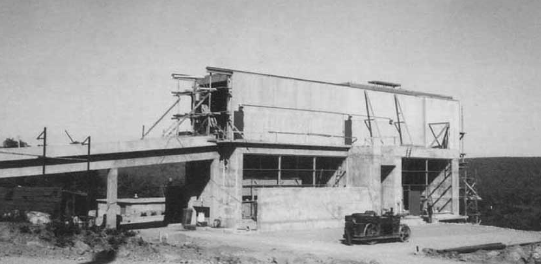 |
|||
Another view of Test Stand E-2. Bob Holland collection |
||||
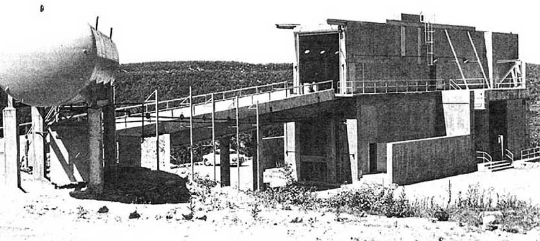 |
||||
RMI Test Stand E-2. Bob Holland collection |
RMI Test Stand E-5. Bob Holland collection |
|||
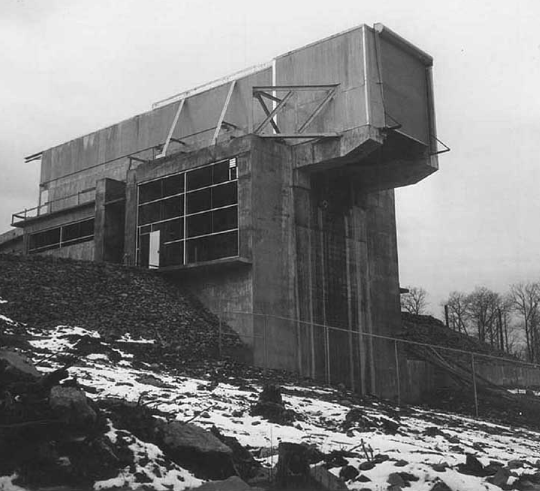 |
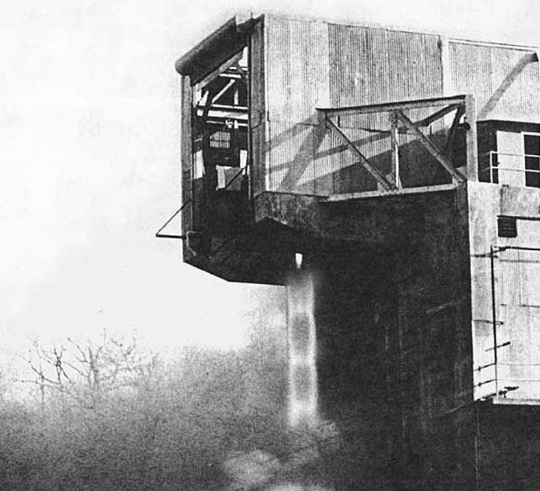 |
|||
RMI Test Stand E-4. Bob Holland collection |
RMI Test Stand E-6. Bob Holland collection |
|||
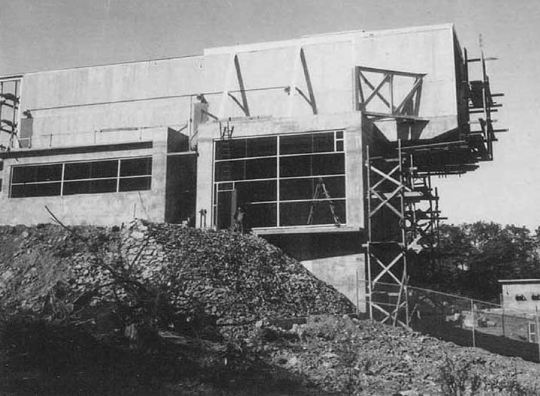 |
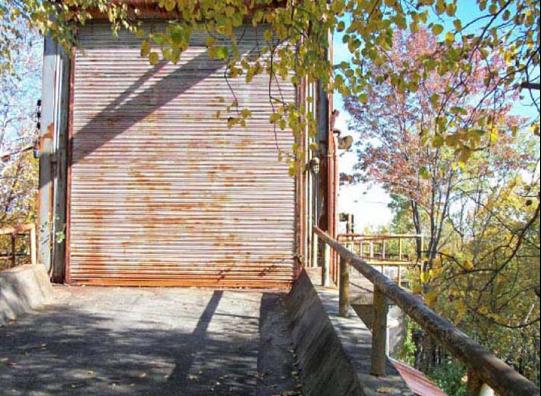 |
|||
RMI Test Stand E-3. Bob Holland collection |
Roll-up door entrance to RMI Test Stand E-8. Ken Montayne collection |
|||
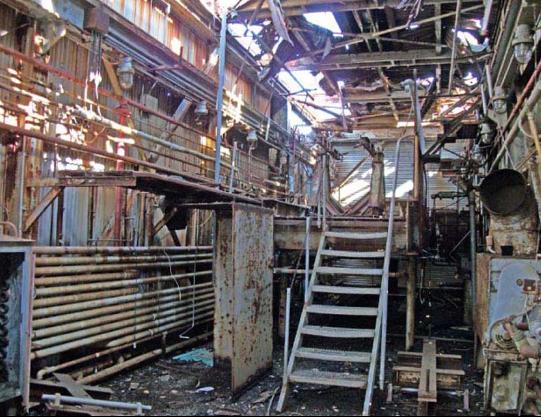 |
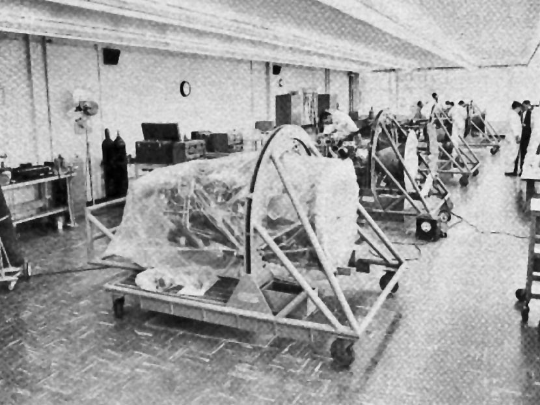 |
||||
The XLR-99-RM-1 assembly line during more active days. The rocket in the foreground is wrapped in plastic and ready for shipment to Edwards for installation on an X-15 Thiokol |
|||||
Inside Test Stand E-9. Ken Montayne collection |
|||||
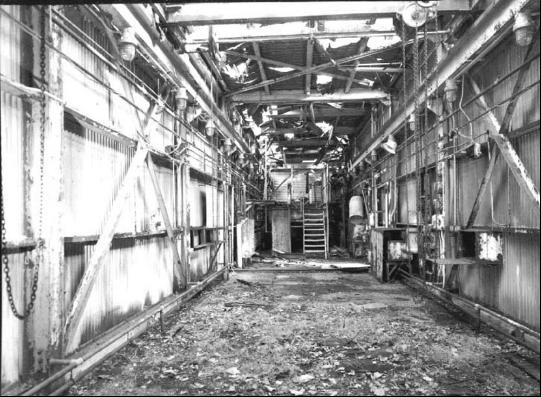 |
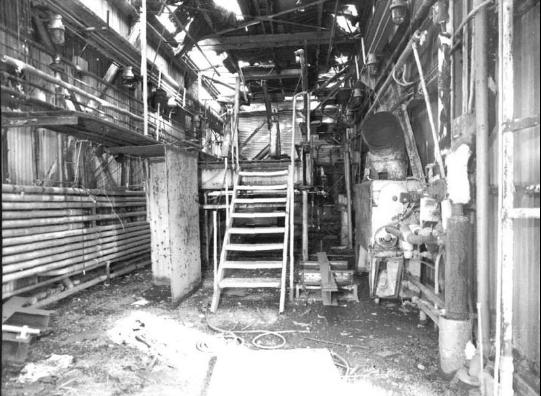 |
|||
(above and below) Various views inside the abandoned Test Stand E. The test engine would have been mounted on the platform at the top of the staircase. Ken Montayne collection |
||
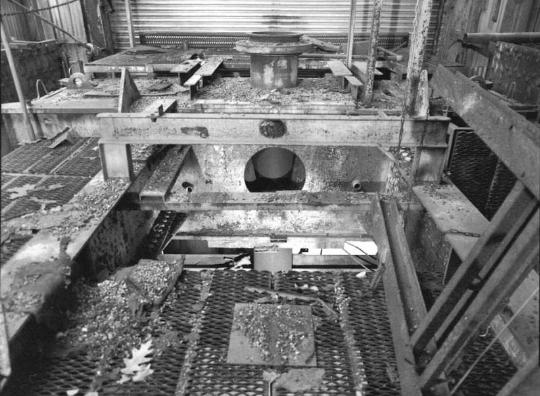 |
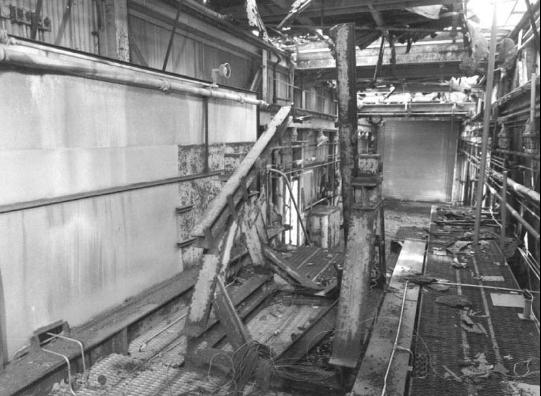 |
|||
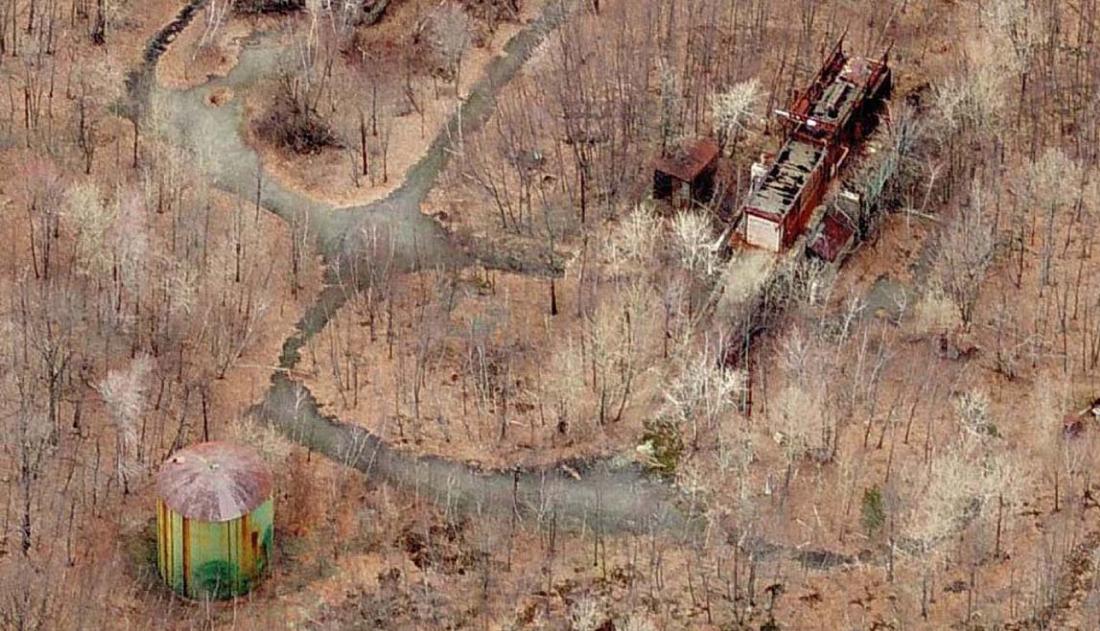 |
||
Aerial view of the remains of Test Stand E-2 prior to final demolition. The site is now part of Picatinny Arsenal. Ken Montayne collection |
||
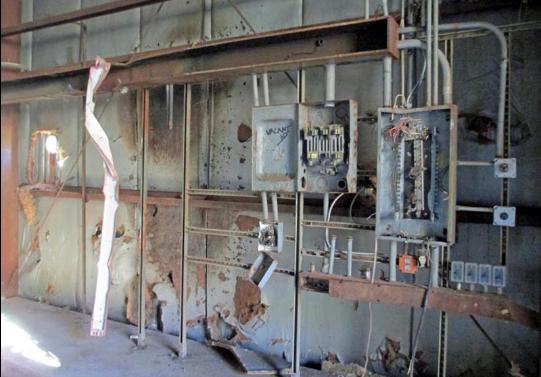 |
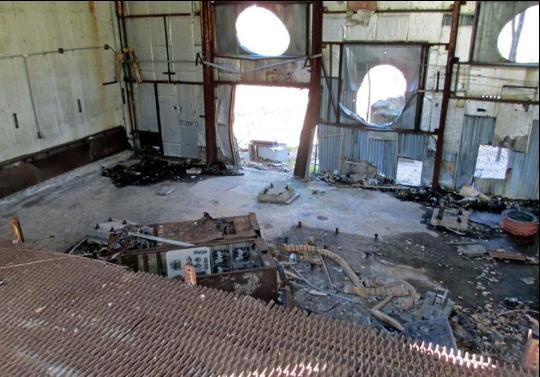 |
|||
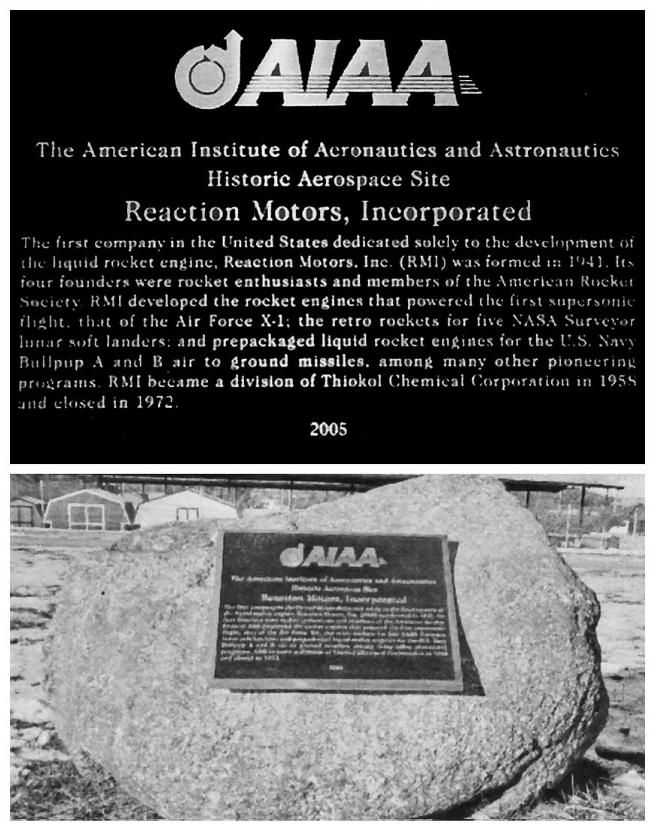 |
The American Institute of Aeronautics and Astronautics placed this commemorative plaque at the Reaction Motors site in 2005 to mark the historical location of their work in American rocketry. Bob Holland collection |
|||
Text of the AIAA plaque:
The American Institute of Aeronautics and Astronautics Historic Aerospace Site
Reaction Motors, Incorporated
The first company in the United States dedicated solely to the development of the liquid rocket engine. Reaction Motors, Inc (RMI) was formed in 1941. Its four founders were rocket enthusiasts and members of the American Rocket Society. RMI developed the rocket engines that powered the first supersonice flight, that of the Air Force X-1, the retro rockets for five NASA Surveyor lunar soft landers, and prepackaged liquid rocket engines for the U.S. Navy Bullpup A and B air to ground missiles, among many other pioneering programs. RMI became a division of Thiokol Chemical Corporation in 1958 and closed in 1972.
2005
It is wonderful that AIAA created and placed this plaque at such a historic location, but it is unfortunate that they did not mention the significant contribution to hypersonic flight made here with the development and testing of their most famous rocket engine: the XLR99-RM-1. |
||||
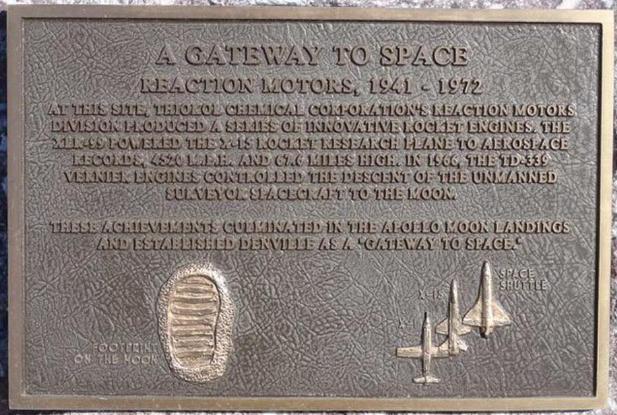 |
||||
A second Reaction Motors commemorative plaque. This one states:
A Gateway to Space
Reaction Motors 1941-1972
At this site, Thiokol Chemical Corproration, Reactions Motors Division, produced a series of innovative rocket engines. The XLR-99 powered the X-15 rocket research plane to aerospace records, 4520 m.p.h. and 67.6 miles high. In 1966, the TD-339 vernier engines controlled the descent of the unmanned Surveyor spacecraft to the Moon.
These achievemements culminated in the Apollo Moon landings, and established Denville as the "Gateway to Space."
At least this plaque does honor the X-15 legacy of Reaction Motors, however, the statement about acheiving 67.6 miles is incorrect. The altutude record set by Joe Walker on 22 Aug. 1963 was 67.1 miles. The maker of this plaque is unknown. author's collection |
||||